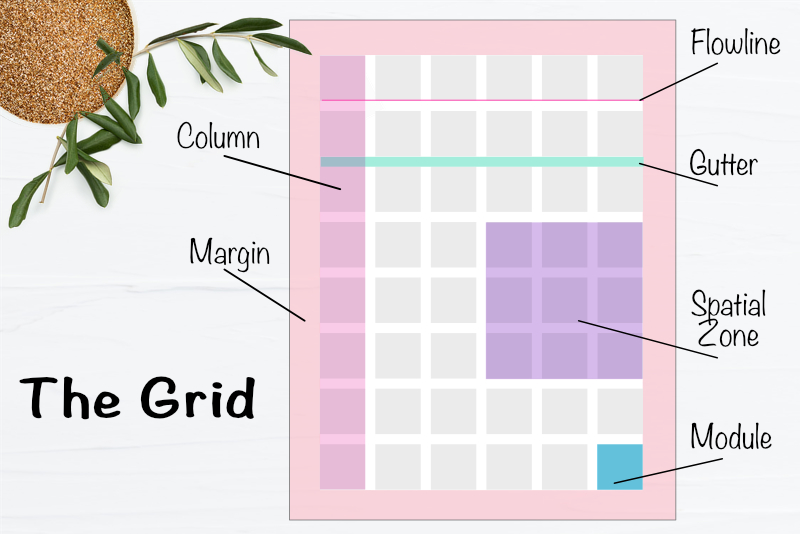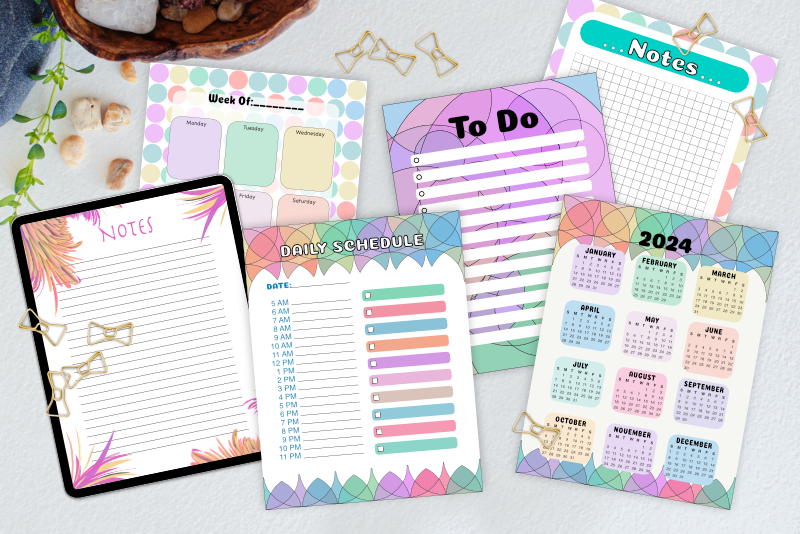Types of Layouts in 8 pt Grid Design System

In this tutorial, we will take a look at the types of grid layouts that are used with the 8 pixel or point grid system. We will discuss the layouts that work best for digital planner paper designs. As you will see, choosing a grid layout for your paper design will depend on the content included on the page.
In the last tutorial, we discussed the parts of the grid design system. We can combine these together to create grid layouts that can be used to create the most popular digital planner papers. Click the links to see examples.
Manuscript Grid - A single vertical column layout that spans the entire content area of a page design. This layout can be used for planner pages with large text content areas such as notes and to do list (see screenshot).
Column Grid - Two or more vertical columns of content separated by gutters. The columns may have even or uneven widths. This layout is good for tall and thin content such as on a daily schedule page (see screenshot).
Modular Grid - Page content area divided into smaller evenly sized content blocks separated by gutters. Most flexible layout for placing a variety of content. This layout is useful when you have a combination of content with different sizes, such as images and text areas (see screenshot).
Baseline - Horizontal grid lines are determined by the baseline of the text on the page.
Hierarchical - Layout based on the hierarchical value of the content on the page. The most important content is placed at the top of the page.
Composite - This grid layout contains a combination of grid types, such as column and modular grids. Composites grids can be designed specifically for a unique combination of content.
In the next tutorial, we will start building our template kit.
Create a Digital Planner Template Kit - Series Index
In the last tutorial, we discussed the parts of the grid design system. We can combine these together to create grid layouts that can be used to create the most popular digital planner papers. Click the links to see examples.
Manuscript Grid - A single vertical column layout that spans the entire content area of a page design. This layout can be used for planner pages with large text content areas such as notes and to do list (see screenshot).
Column Grid - Two or more vertical columns of content separated by gutters. The columns may have even or uneven widths. This layout is good for tall and thin content such as on a daily schedule page (see screenshot).
Modular Grid - Page content area divided into smaller evenly sized content blocks separated by gutters. Most flexible layout for placing a variety of content. This layout is useful when you have a combination of content with different sizes, such as images and text areas (see screenshot).
Baseline - Horizontal grid lines are determined by the baseline of the text on the page.
Hierarchical - Layout based on the hierarchical value of the content on the page. The most important content is placed at the top of the page.
Composite - This grid layout contains a combination of grid types, such as column and modular grids. Composites grids can be designed specifically for a unique combination of content.
In the next tutorial, we will start building our template kit.
Create a Digital Planner Template Kit - Series Index

Related Articles
Editor's Picks Articles
Top Ten Articles
Previous Features
Site Map
Content copyright © 2023 by Diane Cipollo. All rights reserved.
This content was written by Diane Cipollo. If you wish to use this content in any manner, you need written permission. Contact Diane Cipollo for details.






